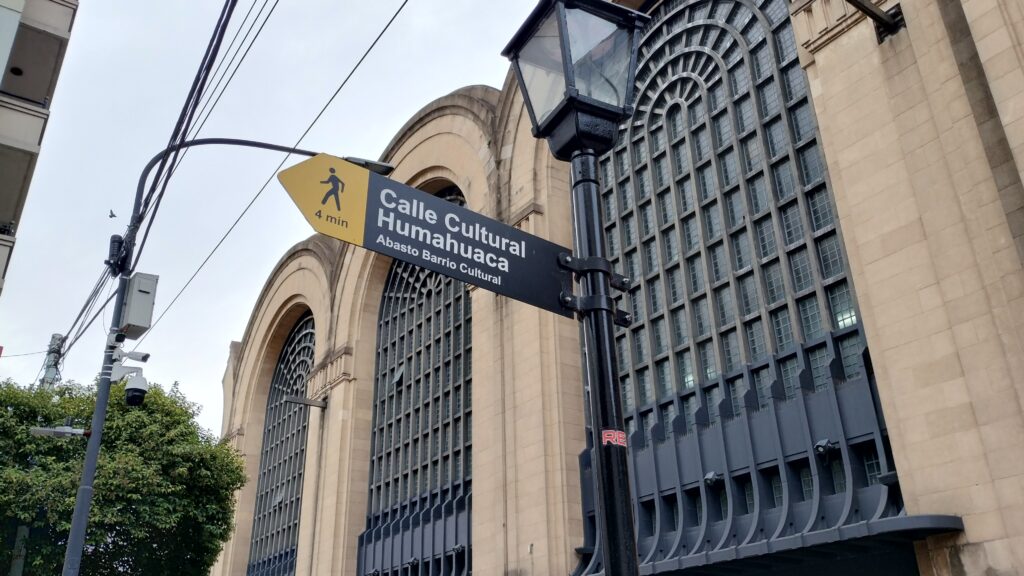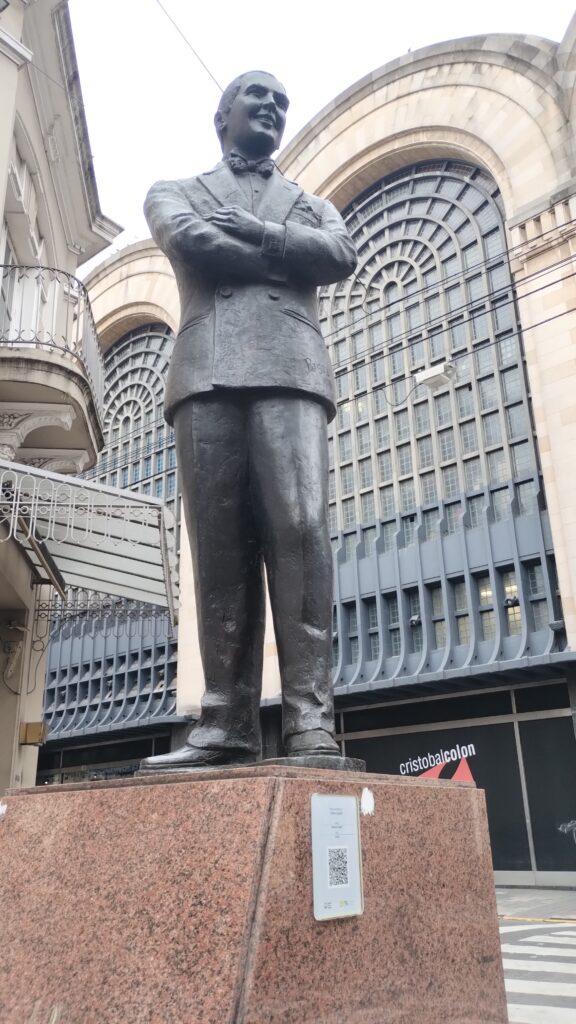Have you ever wondered what makes Abasto, Buenos Aires, a must-visit destination for culture enthusiasts and history buffs alike?
Let ExpatPathways lead you through “Abasto (Buenos Aires): Everything You Need to Know Before Your Visit,” your ultimate guide to exploring one of the city’s most culturally rich neighborhoods.
Step into a world where tango echoes through the streets, where history meets contemporary life, and where every corner tells a story.
Whether you’re a digital nomad seeking inspiration, a traveler in pursuit of authentic experiences, or an expat exploring your new home, our guide ensures you’ll capture the essence of Abasto’s vibrant community spirit and its pivotal role in Buenos Aires’ cultural tapestry.
Abasto (Buenos Aires): Everything You Need to Know Before Your Visit
What is Abasto de Buenos Aires?
Abasto is not officially recognized as a distinct neighborhood in Buenos Aires, but its strong cultural identity linked to tango, the iconic Carlos Gardel, and its history as the site of the former Abasto Market sets it apart.
This area, part of the Balvanera neighborhood, was transformed from a quiet suburb into a bustling hub when the market was established here, operating until 1984.
The market’s influence attracted immigrants and artists, making Abasto a vibrant center for the performing arts and tango music.

Historical and Cultural Landmarks
Today, Abasto is nestled between the neighborhoods of Balvanera and Almagro, drawing its name from the old Abasto Market, now repurposed as the Abasto Shopping Center located on Avenida Corrientes at 3200.
This area was the childhood home of Carlos Gardel, whose legacy is commemorated by the Pasaje Carlos Gardel near the market, adorned with a statue of Gardel and a monument to the bandoneón.
The passage also features sculptures honoring other tango legends like Tita Merello, Aníbal Troilo, and Astor Piazzolla, reinforcing Abasto’s reputation as one of the city’s most tanguero neighborhoods.
Where is the Abasto de Buenos Aires?
The area known as Abasto is primarily defined by the vicinity around the Abasto Shopping Center, encompassing parts of the Almagro and Balvanera neighborhoods.
The region extends more significantly in a north-south direction than east-west, with its heart lying at the intersection of several busy city streets.
Access and Local Amenities
Abasto is bordered by Corrientes, Aguero, Anchorena, and Lavalle streets. It boasts a rich array of bars, restaurants, and retail outlets, contributing to its lively cultural and commercial atmosphere.
The area is also noted for its excellent public transport connections, making it easily accessible and a focal point for both official and alternative cultural activities.
Positioned centrally on the map of Buenos Aires, Abasto serves as a vibrant cultural heart of the city, bustling with activities and filled with historical significance.
How to Get to Abasto de Buenos Aires
Abasto is well-connected and accessible, making it easy to reach by public transport, personal vehicle, or bicycle. The area benefits from being centrally located yet less densely populated than the micro-center of Buenos Aires, facilitating straightforward access and departure.
Abasto’s public transport is particularly robust, featuring numerous bus lines such as 24, 26, 71, 99, 124, 146, 168, and 180. Additionally, the Buenos Aires subway system’s Line B runs directly beneath the Abasto Shopping Center, with the Carlos Gardel station offering convenient access directly into the mall without needing to surface.

Cycling and Other Access Routes
For cyclists, Abasto is equipped with protected bike lanes, including a significant route along Humahuaca Street that ends at Aguero Street near Abasto, and another along Avenida Corrientes.
These lanes provide safe and efficient travel options within the neighborhood. Despite the pedestrian and taxi traffic, these routes ensure that cyclists can move easily through the area, further enhancing Abasto’s accessibility.
Why You Should Visit Abasto de Buenos Aires
Abasto is not just a neighborhood but a vibrant cultural hub that hosts an array of artists, artisans, musicians, art galleries, ateliers, cultural centers, museums, and independent theaters such as El Cubo, Teatro Ciego, and Ciudad Cultural Konex.
The area is also famed for its food scene, housing iconic city bars and pizzerias like Belén and La Reina, and renowned restaurants such as Cantina Don Carlos and Gratto.
Abasto’s rich history is punctuated by its association with notable figures like Luca Prodan of Sumo, who referenced the neighborhood in his music, highlighting its deep-rooted cultural significance.
Architectural and Community Melting Pot
Abasto also exemplifies the architectural reutilization that defines Buenos Aires, with the transformation of its iconic market into the bustling Abasto Shopping Center. This redevelopment has sparked a real estate boom, changing the face of the neighborhoods of Balvanera and Almagro.
Moreover, the area’s ability to blend different religious and ethnic communities harmoniously, including significant Jewish and immigrant populations from Peru and Bolivia, adds to its allure as a must-visit destination in Buenos Aires.

Activities in the Abasto Neighborhood of Buenos Aires
Tango and Gardel
Abasto is synonymous with the tango legend Carlos Gardel, whose artistic roots permeate the area. Visitors can explore the Carlos Gardel Museum on Jean Jaures Street, where Gardel once lived, and immerse themselves in the neighborhood’s rich musical heritage.
The Pasaje Carlos Gardel, lined with restaurants, accommodation, and bars, offers nightly tango shows, allowing guests to experience the dance that defines the city.
Additionally, numerous tributes to Gardel, including statues and murals, can be found throughout the neighborhood, inviting tourists to engage with his legacy visually and culturally.
Peruvian Food Scene
Reflecting Buenos Aires’ diverse immigrant history, Abasto has become a focal point for the Peruvian community, which has established numerous Peruvian restaurants and bars in the area.
This influence enriches Abasto’s gastronomic landscape, offering visitors a chance to indulge in authentic Peruvian dishes like ceviche and pisco sour at very reasonable prices.
Abasto Shopping Center
The transformation of the old Abasto Market into the contemporary Abasto Shopping Center is a highlight of the neighborhood.
This large mall serves as a cultural and commercial nucleus, offering a wide range of amenities including shops, food courts, cinemas, and a recreational area.
The shopping center is not only a retail haven but also an architectural landmark that respects the historical structure while providing modern conveniences.
Culture and Theater
Contrasting with the commercial vigor of the Abasto Shopping Center, the neighborhood is also known for its rich theatrical and cultural scene.
Numerous independent theaters and cultural centers offer alternative entertainment options to shopping, providing a glimpse into the neighborhood’s artistic soul.
These venues, scattered around the shopping center, offer a range of performances and cultural activities that reflect the neighborhood’s creative diversity.
Last Considerations
As your exploration of Abasto comes to a close, keep in mind that the neighborhood offers a full day’s itinerary from morning to night. Abasto Shopping welcomes visitors daily from 10 AM until 10 PM, providing ample opportunity to explore its many shops and attractions.
As evening approaches, the area becomes even more enticing, with an array of tango shows, culinary delights, and lively entertainment venues to enhance your Buenos Aires experience.
Remember, while Abasto’s safety is on par with other city areas, it’s wise to stay cautious after dark, keeping an eye on your belongings and sticking to well-lit streets.
Let ExpatPathways guide you through the vibrant streets of Abasto, where every visit promises new discoveries and memorable moments.


